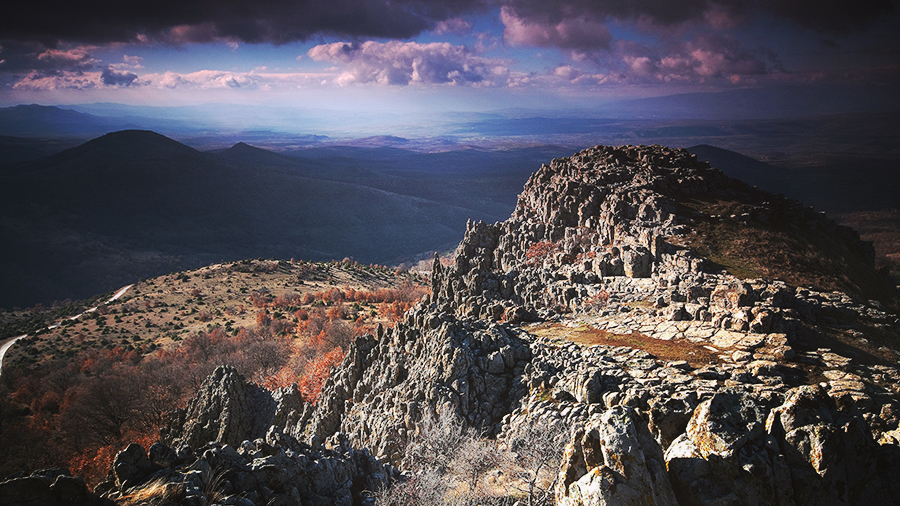From vast sparkling lakes and lush forests to the towering mountains that surround them, the Republic of Macedonia is home to a variety of magnificent sights fit for anyone to explore! Due to its rich, ancient history this region has accumulated more wonders than it can showcase. This fortunately makes for a land littered with gorgeous archeological and historic sites that, until recently, have been criminally underrated and traded for more acclaimed destinations in nearby countries from Croatia to Greece. There are certainly many popular points of interest in the country but this article will introduce some hidden gems that only locals would know of.
KOKINO

Move over Stonehenge, a personal favourite and a must-see is the ancient megalithic observatory of Kokino. This 3800 year old site is located near the northern Macedonian town of Kumanovo on the Tatikjev Kamen summit. It has been promoted by NASA as being an astounding prehistoric site. Kokino has finds dating back from the 19th century BC that indicate a period of settlement into the 7th century BC as demonstrated by the pendants, bronze axe moulds, and the vessels of offerings found on the hill which go to support a theory claiming it had once been regarded at as a ‘holy mountain’. Overall, evidence largely points to it having held a purpose as an observatory consisting of two platforms tracking the movement of the Sun and the Moon through the use of stone markers. Making the trip up to Kokino and taking a seat in one of the four stone thrones of the lower platform would certainly make for an unforgettable experience impossible to be replicated anywhere else!
STYBERRA

West of Prilep on a picturesque hillside one will find the marvelous ruins of an ancient Macedonian city called Styberra by the shores of the river Erigon (now Crna Reka). Although the country is well-known for the ancient cities of Stobi and Heraclea, Styberra is often neglected. Nonetheless, this extraordinary ruin offers plenty to see, such as: a temple for the goddess Tyche described as the protector of the city; 28 busts or monuments of prominent citizens, deities and emperors; numerous well preserved marble inscriptions; as well as remnants of public buildings like gymnasiums and lecture spaces. The list of incredible finds in this city appears endless! Styberra reached its height during the 2nd century AD being home to upwards of 20 000 citizens, although its beginnings date back to the 4th century BC. However in the later half of the 3rd century, life in this seemingly flourishing city came to an abrupt and brutal halt; although still uncertain, most believe it to be a result of raids by Goths.
KUKLICA

Near the small town of Kratovo lies the peculiar spectacle that is Kuklica. 120 stone figures stand tall in this small space created by volcanic rocks which have existed for 100 000 years. Yet, an alternative theory of its creation can be seen through a popular folk tale. According to the legend of the townspeople, there existed an indecisive man who struggled to choose between two women to marry – one being poor but beautiful while the other was rich although not as striking. His strategy was to wed both on the same day, keeping this secret from each woman. However, he suffered an unimaginable fate when the loud music caused the poorer woman to stumble across the secret wedding intended for the other. As a result, she cursed the entire wedding party turning them into stone. The town therefore bears the name Kuklica which roughly translates to ‘little dolls’. Despite the trek it may take to get there, it is certainly worth a visit for this unique and oddly mystical site!
KALINA CAVE

In Lazaropole, a town encompassed in the broader region of the Mijak tribe, tales are still being told about the cave of Kalina. As the story goes, during the Ottoman Empire, Macedonian villagers feared the onslaught of Turkish soldiers who garnered a reputation for pillaging and burning down the villages they crossed. During an ambush, the villagers went to hide themselves and their families in a cave with a very narrow entrance. They were determined to wait as long as they had to in order to survive. Kalina, a young girl in the cave, thought that the Turks had left by the time she had started singing a joyous song of celebration. Unfortunately, the Turks were still in the area and Kalina’s voice led them to the cave where the villagers were slaughtered and in turn, the village burned. In the end, only one man named Lazar was left alive to tell the tale and after him the village was named. Spend a day wandering through the fields of Lazaropole and exploring the cave or simply enjoy a coffee at the famous Hotel Kalin and hear the locals tell this captivating tale.
PEŠNA CAVE
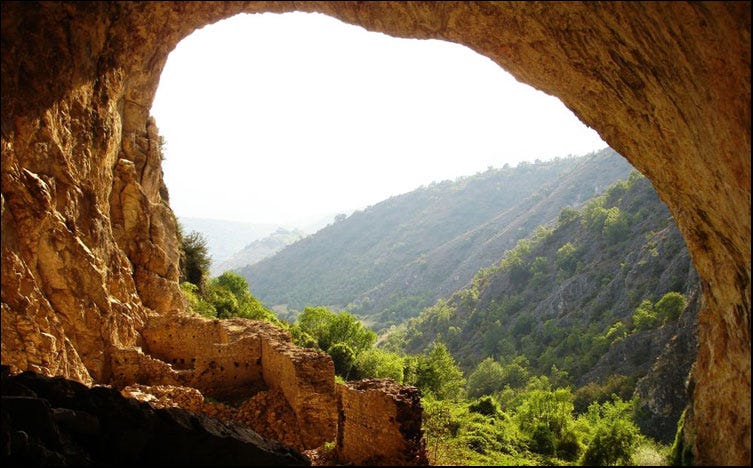
Only 6 kilometers from Makedonski Brod, Pešna Cave opens up to the breathtaking view of the natural scenery surrounding it. This spot has garnered some modest fame among travel writers comparing it to that in The Lord of the Rings films. Regardless, it remains an unexploited gem and seldom visited tourist destination. After inspecting the cave, speleologists concluded that it has the largest entrance in the Balkans and this particular system of caves is believed to stretch over 10 kilometres! Moreover, the experts exploring this cave have come across a lake with an endemic species of fish whose scales eerily resemble human skin – a feature only found in the Postojna Caves in Slovenia. If bats are no bother for you, then a visit to Pešna cave is highly recommended for its gorgeous views and an incomparable experience as at its entrance you will also find remnants of a medieval fortress. Legend says King Marko built two of his four sisters a home by the cave so they could communicate via echoes. In the 14th century, Pešna, his older sister, was gifted a home at the entrance of the cave and Deva, his younger sister, obtained a home opposite the cave.
GOLEM GRAD

Golem Grad is found in the middle of Lake Prespa and is Macedonia’s only island, but nonetheless one with plenty of history. The name of this island translates simply to ‘Big City’ or ‘Big Fortress’ although it sometimes goes by other titles. For example, it has more recently been dubbed ‘Snake Island’ due to the many species of snakes that inhabit it. After his battles Tsar Samuel, a medieval king of Macedonia, would return to this very island which is believed to hide many of his treasures – now guarded by snakes as the legend claims. This island contains nine impressive archeological sites, most of which are churches dating between the 4th and the 19th century complete with beautiful frescoes. Those researching the island believe that throughout the ancient period it was inhabited by the Macedonian tribe Oresti which has been proved through careful inspection of the priests graves near the monastery complex.Through a small boat ride and a little motivation, this island is easily accessible with help from the friendly locals!
KALIŠTA MONASTERY
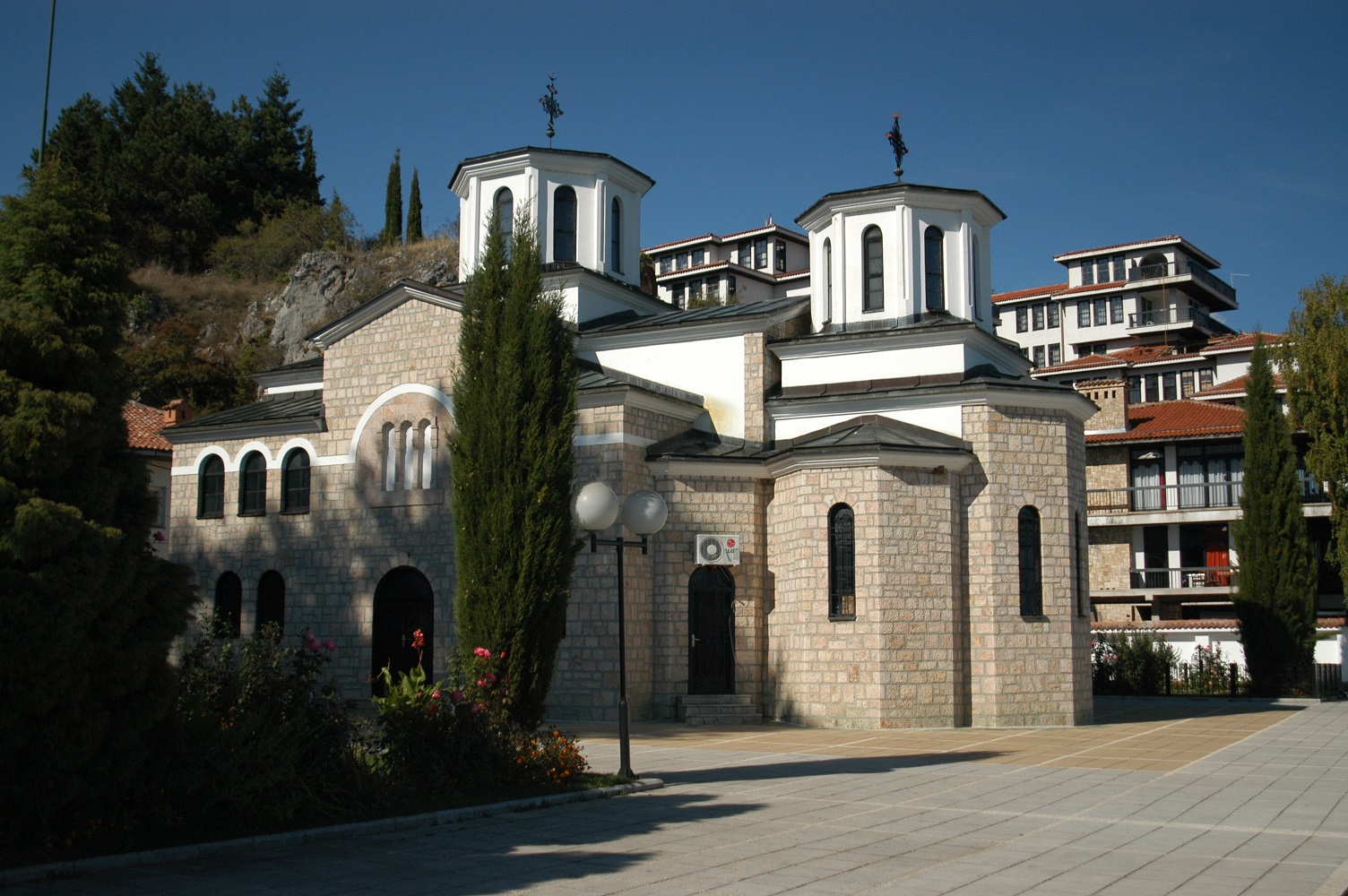
In Struga on the coast of Lake Ohrid lies a charming monastery complex called Kališta, consisting of four churches from different time periods. Although each component is indisputably breathtaking, a central feature that caught my eye is the cave church, The Nativity of Holy Mother of God, which was built in the 14th century and remains almost entirely unaltered and impeccably preserved. The newer church that goes by the same name was founded in the 18th century and protects an icon of the Holy Mother of God (famous for its dark-skinned portrayal of the figures) which villagers associate with a remarkable story of how the icon had been tossed into the lake routinely during the Second World War but each time it inexplicably found itself back on shore. Hence, many believe that this site has truly been blessed.
ELEN SKOK
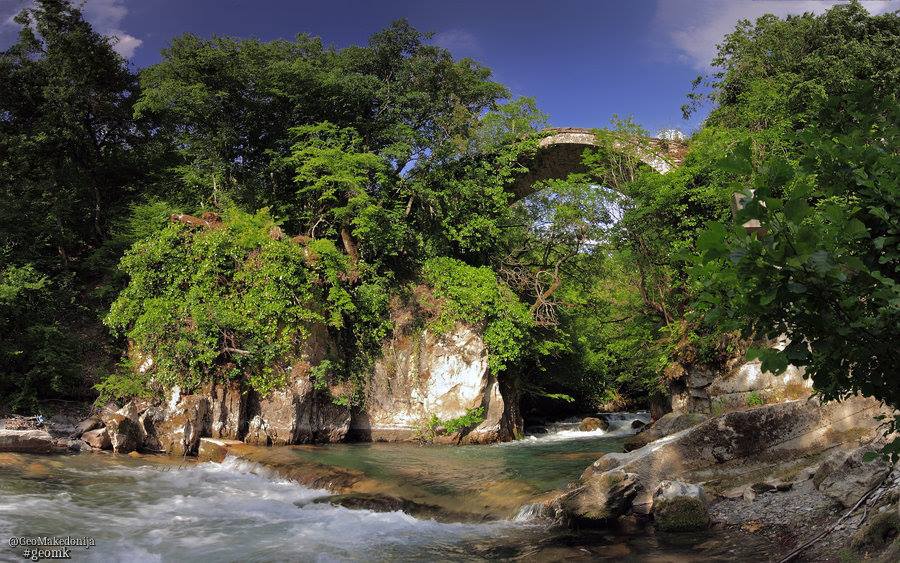
Between the deep forests and mountain valleys in the quaint village region of the Mijaks, an old bridge resembling that of Stari Most in Bosnia and Herzegovina stands out. Interestingly enough, it is said that both bridges were designed by the same architect. The name Elen Skok translates to ‘Deer Jump’ and is derived from an ancient tale of the region set during the Ottoman period where a provincial ruler and his men pursued a deer but in their efforts only managed to wound it. With consistent pursuit, the deer was eventually trapped; its only escape was to jump across the rapid waters of the Garska River below. Unfortunately, in the deer’s attempt to cross to the other side it had broken its legs. Despite this, the men were baffled by the bravery of this little deer and built the bridge in the shape of the deer’s leap to honour it. With the relaxing sound of the splashing waters and the sight of the bridge overlooking a sea of green trees and soaring mountains, one cannot help but feel at peace.
BAY OF BONES
%20(2).jpg)
Although an already blossoming tourist attraction, the Bay of Bones in Ohrid is often overlooked for sites like the Monastery of Saint Naum. The Bay of Bones however offers a rare experience that one cannot find anywhere else in Macedonia. It allows visitors to explore an authentic reconstruction of a prehistoric pile-dwelling settlement that dates back from 1200 to 700 BC on the waters of one of Europe’s deepest and oldest lakes. This one of a kind archeological museum offers an increasingly more interactive experience than that provided anywhere else. Visitors are free to wander in and out of the 24 decorated huts accompanied by everything from ceramic vessels and stone artifacts to animal bones – establishing that this was in fact a highly developed civilization during its time. In addition, for those seeking even more adventure, a scuba diving tour can be provided showcasing the ruins that still remain at the floor of the lake.
SUNKEN CHURCH OF ST. NICHOLAS
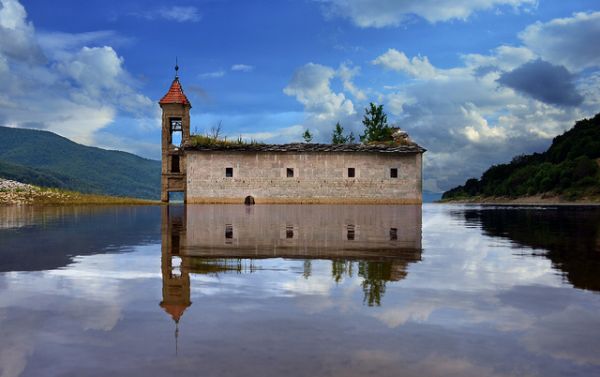
Passing through Mavrovo Lake one cannot help but set their gaze on the partially submerged church of St. Nicholas. Alas, there is no mythical tale that explains this event. To put it simply, the church had flood as a result of the creation of the artificial lake intended to supply water to a local power plant, ultimately it ended up covering many sections of the older villages in the area. However, this does not deter locals and tourists alike from trying to capture a photo of this unparalleled sight. The location alone provides an astonishing view of a scenic mountain landscape which is only made more appealing by the position of this church in the middle of the lake. Today we see plant life begin to cover the ruins as the tiles holding it together fall apart, therefore while it lasts don’t miss a chance to visit this iconic feature of the Mavrovo region.
Macedonia has thus proven to be a land of wonders. It is without a doubt a region worth exploring and for those who believe they’ve already seen every nook and cranny, I urge you to take some time to delve into some of the lesser-known gems this country has to offer – you certainly won’t regret it.
References:
Angeleska, Kristina. “Cave from the tales, legends, and ‘Lord of the Rings’.” Balkon3. http://balkon3.com/en/cave-from-the-tales-legends-and-lord-of-the-rings/.
“Bay of Bones.” My Guide Macedonia. June 9 2017. https://www.myguidemacedonia.c.om/travel-articles/bay-of-bones.
Blazeski, Goran. “Valley of the Dolls: The Stone Dolls of Kuklica and the Legend of the Petrified Wedding Party.” The Vintage News. April 10 2017. https://www.thevintagenews.com/2017/04/10/valley-of-the-dolls-the-stone-dolls-of-kuklica-and-the-legend-of-the-petrified-wedding-party-2/.
Derliev, Vladimir S. “The Exceptional Kokino Observatory – Ancient Megalithic Site, Holy Mountain.” Ancient Origins. October 4 2015. https://www.ancient-origins.net/ancient-places-europe/exceptional-kokino-observatory-ancient-megalithic-site-holy-mountain-004070.
HAEMUS. “Styberra.” http://haemus.org.mk/styberra/.
“Kalishta Monastery (Манастир Калишта) near Struga.” Macedonia Travel Guide. https://whereismacedonia.org/kalista-monastery-near-struga/.
T., Ana. “Elen Skok – The Legend behind the Mythical Bridge in Macedonia.” Slavorum. https://www.slavorum.org/elen-skok-the-legend-behind-the-mythical-bridge-in-macedonia/.
T., Ana. “Golem Grad – The only Macedonian Island, but it’s overrun by snakes.” Slavorum. https://www.slavorum.org/golem-grad-the-only-macedonian-island-but-its-overrun-by-snakes/.
Temelkovski, Duško. “A Day with Macedonian Archaeology – Styberra, Center of Devriop.” Day of Archaeology. http://www.dayofarchaeology.com/a-day-with-macedonian-archaeology-styberra-center-of-devriop/.
“The Flooded Church of St. Nicholas Submerged in Mavrovo Lake, Macedonia.” Urban Ghosts. https://www.urbanghostsmedia.com/2012/09/the-flooded-church-of-st-nicholas-submerged-in-mavrovo-lake-macedonia/ .

